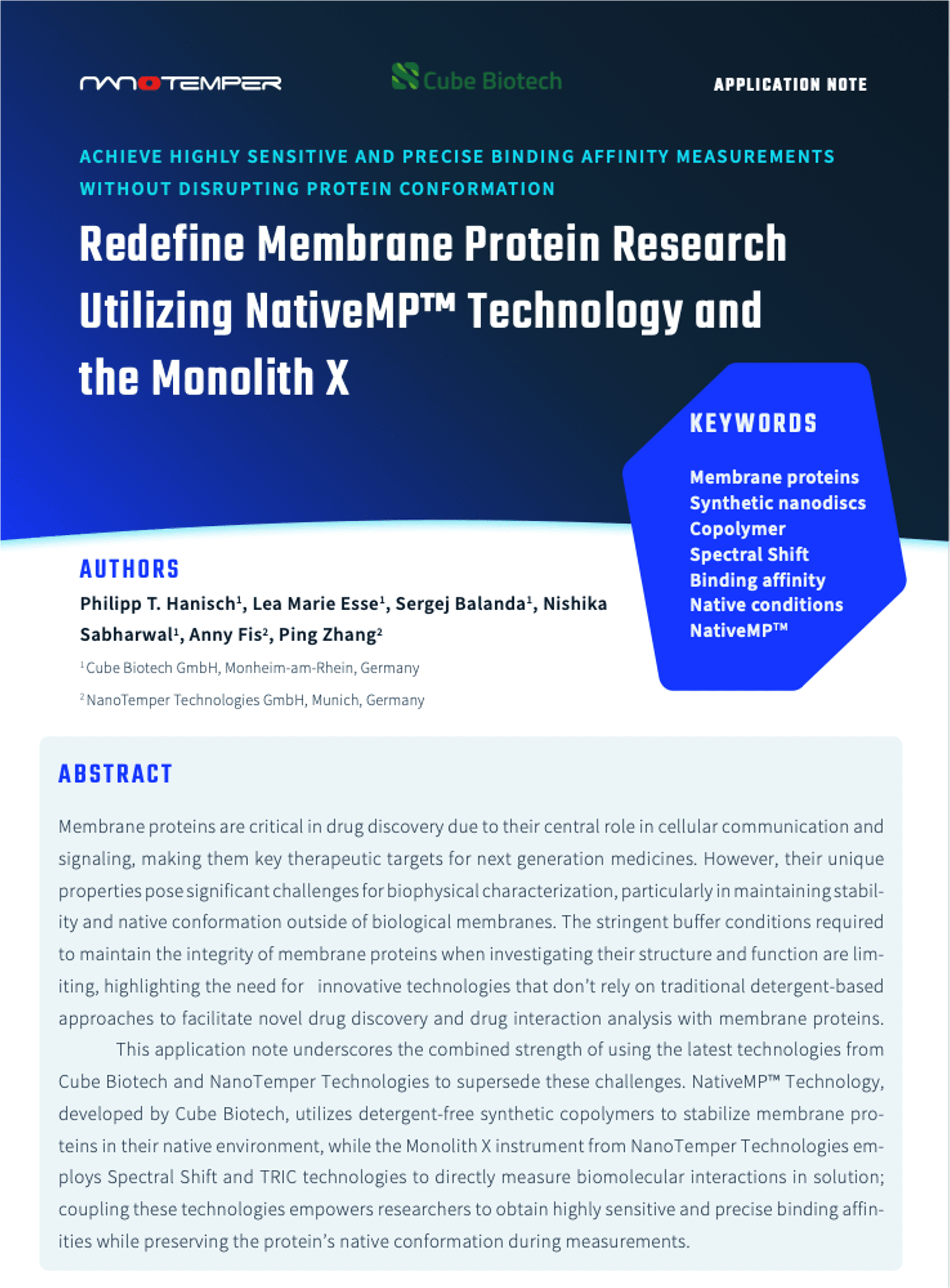Langer, A., Bartoschik, T., Cehlar, O., et al.
ASSAY and Drug Development Technologies 2022, doi: 10.1089/adt.2021.133
Abstract
There are many fluorescence-based applications that can be used to characterize molecular interactions. However, available methods often depend on site-specific labeling techniques or binding-induced changes in conformation or size of the probed target molecule. To overcome these limitations, we applied a ratiometric dual-emission approach that quantifies ligand-induced spectral shifts with sub-nanometer sensitivity. The use of environment-sensitive near-infrared dyes with the method we describe enables affinity measurements and thermodynamic characterization without the explicit need for site-specific labeling or ligand-induced conformational changes. We demonstrate that in-solution spectral shift measurements enable precise characterization of molecular interactions for a variety of biomolecules, including proteins, antibodies, and nucleic acids. Thereby, the described method is not limited to a subset of molecules since even the most challenging samples of research and drug discovery projects like membrane proteins and intrinsically disordered proteins can be analyzed.
Topics: Monolith, Publications










